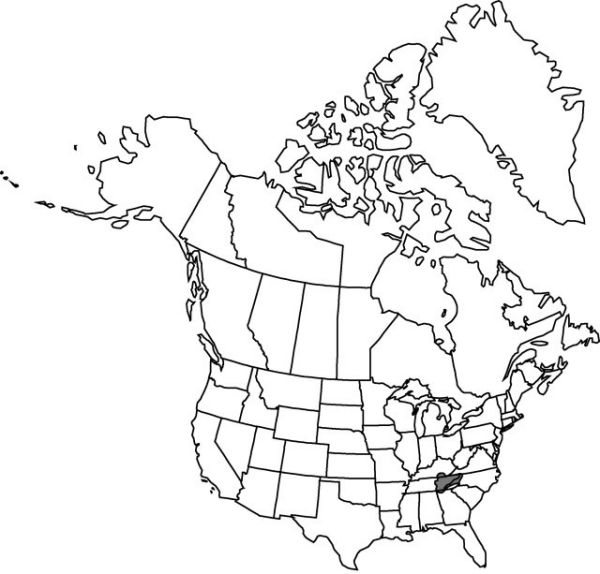Difference between revisions of "Trillium luteum"
Biltmore Bot. Stud. 1: 21. 1901.
FNA>Volume Importer |
FNA>Volume Importer |
||
| Line 11: | Line 11: | ||
|name=Trillium sessile var. luteum | |name=Trillium sessile var. luteum | ||
|authority=Muhlenberg | |authority=Muhlenberg | ||
| + | |rank=variety | ||
|publication_title=Cat. Pl. Amer. Sept., | |publication_title=Cat. Pl. Amer. Sept., | ||
|publication_place=38. 1813 | |publication_place=38. 1813 | ||
| Line 17: | Line 18: | ||
|name=Trillium viride var. luteum | |name=Trillium viride var. luteum | ||
|authority=(Muhlenberg) Gleason | |authority=(Muhlenberg) Gleason | ||
| + | |rank=variety | ||
}} | }} | ||
|hierarchy=Liliaceae;Trillium;Trillium subg. Phyllantherum;Trillium luteum | |hierarchy=Liliaceae;Trillium;Trillium subg. Phyllantherum;Trillium luteum | ||
| Line 43: | Line 45: | ||
-->{{#Taxon: | -->{{#Taxon: | ||
name=Trillium luteum | name=Trillium luteum | ||
| − | |||
|authority=(Muhlenberg) Harbison | |authority=(Muhlenberg) Harbison | ||
|rank=species | |rank=species | ||
| Line 58: | Line 59: | ||
|publication year=1901 | |publication year=1901 | ||
|special status= | |special status= | ||
| − | |source xml=https://jpend@bitbucket.org/aafc-mbb/fna-data-curation.git/src/ | + | |source xml=https://jpend@bitbucket.org/aafc-mbb/fna-data-curation.git/src/f50eec43f223ca0e34566be0b046453a0960e173/coarse_grained_fna_xml/V26/V26_133.xml |
|genus=Trillium | |genus=Trillium | ||
|subgenus=Trillium subg. Phyllantherum | |subgenus=Trillium subg. Phyllantherum | ||
Revision as of 20:46, 16 December 2019
Rhizomes horizontal, brownish, short, thick, praemorse, not brittle. Scapes 1–4, round in cross section, 1.4–4 dm, stout, glabrous. Bracts held well above ground, sessile; blade mottled, mottling becoming more obscure as growth matures, shape variable, ovate-elliptic to ± orbicular-acuminate, 6.5–17 × 6.5–9.8 cm, not glossy, apex acuminate to long-acuminate. Flower erect, odor strongly lemony; sepals displayed above bracts, widely spreading, green, oblong-lanceolate, lanceolate, or oblong-elliptic, 22–47 × 8–9 mm, margins entire, apex distinctly rounded-acute; petals long-lasting, erect, ± connivent, ± concealing stamens and ovary, greenish yellow to lemon yellow, not spirally twisted, not clawed, elliptic-lanceolate, lanceolate, or oblanceolate, 3.4–6.6 × 1–2.1 cm, thick-textured, widest near base, margins entire, tapering to long-acuminate apex; stamens erect, 11–18 mm; filaments greenish white, 1.5–2 mm, basally dilated; anthers erect, straight, yellow, 9–16 mm, dehiscence introrse (or appearing lateral); connectives green, straight, broad, extending only slightly (to 0.5 mm) or not at all beyond anther sacs; ovary pale green, ovoid to globose, 6-angled, 5–8 mm; stigmas erect, barely spreading, distinct, greenish white, sessile, linear to subulate, 3–4 mm, fleshy. Fruits green to greenish white, occasionally with dark streaks, odor not reported, ovoid, 6-angled, 3.5 × 2 cm, pulpy. 2n = 10.
Phenology: Flowering spring (Apr–May).
Habitat: Deciduous forests, thin open woods, rocky stream banks and flats, clearings and openings, old fields, rich mature forest on calcareous substrate
Elevation: 200–400 m
Distribution

Ga., Ky., N.C., Tenn.
Discussion
Botanists have been confused by Trillium luteum for a long time. Some, such as A. E. Radford et al. (1968), appear to regard it as a form of T. cuneatum, while others confuse it with T. viride, a more western species. Early botanists confused T. luteum with the occasional individual or very local larger population of pallid color forms of other species. Trillium cuneatum rather frequently produces green, yellowish green, or pale lemon yellow forms (but with a cuneate larger and wider petal) that mimic T. luteum. These forms, when growing with T. luteum, hybridize, leading to so many intergrades that many plants cannot be placed in either species with any confidence. For these reasons, almost no work older than J. D. Freeman’s (1975) can be used reliably to plot distribution of T. luteum.
In some parts of their ranges, Trillium luteum and T. cuneatum do not grow together. Trillium luteum is abundant in eastern Tennessee, extending a short distance into North Carolina and Georgia. Trillium cuneatum is rare or absent from this region except along the Little Tennessee River (J. D. Freeman 1975).
Trillium luteum has escaped and become established along the Grand and Saint Joseph rivers and elsewhere in Michigan, near Kingston and Grimsby, Ontario (J. K. Morton pers. comm.), and probably elsewhere.
Selected References
None.